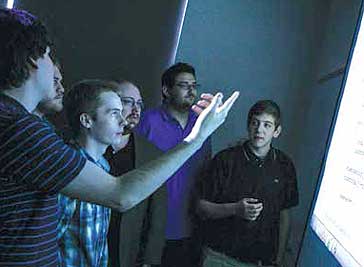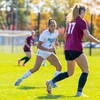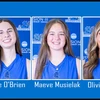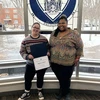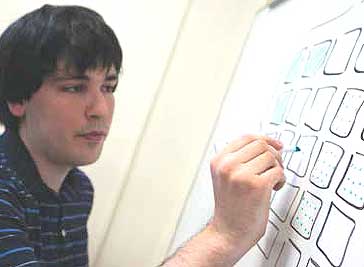
|
We’ve all seen – if not been a part of – a bullying scenario in our lives. How many of us have once said, “I wish I could do something to stop it!”
This past spring, five students and a faculty member within SUNY Fredonia’s Department of Computer and Information Sciences (CIS) did just that. The group created a program concept designed to combat bullying in classrooms by allowing teachers to collect data about bullying incidents throughout the school – data which can be used to alter classroom layouts to lessen the likelihood of a reoccurrence.
Teachers usually know of incidents in their own classroom, according to Instructor Robert Olson. However, they are often unaware of conflicts in other classes or settings. They may also “underreport” minor incidents due to slow, outdated systems that rely on pen and paper. “This will help with information sharing between classrooms,” Mr.
Olson said.
The Fredonia program is web based, making reporting easier, more secure and more accessible by streamlining communication between teachers and administrators about student relationships. Data can also be collected from student surveys and possibly even social networks to help curtail this long-studied social riddle.
The idea is to build and distribute an “open source” (free) system that schools may download via the Internet. It includes a pre-built website that digitizes the record keeping process, allowing teachers to customize the layout of their classrooms to reduce the factors that lead to bullying scenarios.
The students – Zachary Daily, John Malayny, Brian Rashty, Justin Soderberg and Robert Szkutak – initially focused on keeping bullies away from victims. They wrote an algorithm that ranks the extent to which each student is a negative influence on their peers, based on the data collected. This ranking is used to generate seating arrangements that are likely to improve behavior by putting students with the most negative influence into seats where they can least exert it.
“Seats near the center of the room have the most social influence, while border seats offer less of an opportunity,” says Olson, pointing to a seating chart. “We put the most disruptive people in the corners: seats 0, 1, 2 and 3.”
While social influence is important, it can’t come at the expense of social sensitivity. Olson’s students also made sure the program isn’t “accidentally biased.” Friendships often form around racial, economic, religious or gender lines. The students wanted to make sure that they wouldn’t end up, for example, with all the boys in one half of the room and all the girls in the other.
Arranging students is much more complicated than it seems. A classroom with only 10 seats can be arranged in 3,628,800 different ways – so it’s clearly not practical to assume the average teacher could come up the best options.
Though most of the students have now graduated, and some have already landed full-time jobs, they are still committed to the project. They presented their concept at the International Conference on Educational Data Mining in Memphis, Tenn., in July, and reportedly received a very favorable response, distinguishing themselves by their focus on social data mining. They are also calculating social pressures that students feel from peers – mapping those students who might be in difficult social situations that could lead to depression and anxiety.
In addition, they are aiding in the transition to the next group of seniors, who hope to focus on scheduling and flagging troubled student relationships.
“We expect to see trends that aren’t obvious to teachers on their own,” Olson added. “We’re relatively sure we can use the data we gather to predict bullying before it happens to a reasonable degree.”
And you thought your teachers had eyes in the back of their heads!

